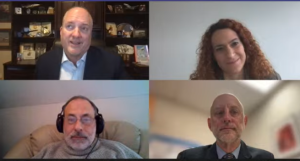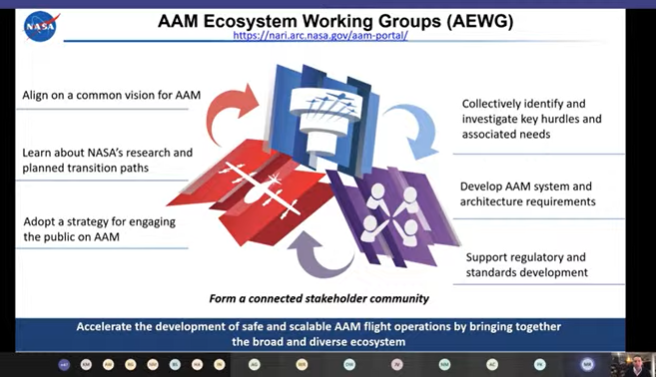By Jenny Beechener
ICAO is setting up a special working group to address Advanced Air Mobility (AAM) and the European Aviation Safety Agency (EASA) is on track to produce a regulatory framework towards the middle of 2023, according to speakers at the International AAM event hosted by the National Aeronautics and Space Agency (NASA) on 3 November 2022.
“This week the ICAO Commission began terms of reference for the AAM work group after receiving direction from all member states at the recent ICAO Assembly, said Donald Ward, Air Navigation Commissioner. He said 17 existing expert panels all touch pieces of AAM but do not have a holistic view of the development of the AAM ecosystem: “ICAO wants some level of harmonisation to get to a global level.”
EASA, meanwhile, launched its AAM rule-making process in 2019, issuing an initial version at the end of 2019. “We have experts from different parts of the industry developing the requirements,” said Maria Algar-Ruiz, EASA Drone programme manager, “Our proposal for regulations was put out to consultation in the first half of 2022 and now we are reviewing all the comments received from industry. We hope to deliver to the European Commission the first proposed set of regulatory requirements for the areas of air operations; pilot licencing; air traffic management (ATM) integration, airworthiness and aerodromes by mid-2023.”
EASA faced the challenge of establishing airworthiness criteria in the absence of a concept of operations (ConOps). Consequently, the agency is working on operational requirements, ConOps, airspace requirements, licencing, ATM/ANS matters together with airworthiness. “What we have on the table is fit for standards and practices. It is similar to helicopter VRF operations with different specific elements and will be accompanied by a set of requirements for vertiport design and operation.” She added EASA is still working on a lot of elements – for example, monitoring traffic in and out of vertiports – but “we believe we can start certain eVTOL operations, receive feedback, and work on further development.”
The NASA “knowledge sharing session” brought together working groups from around the global to exchange ideas about challenges, progress and how to harmonise. AAM touches many areas including “airspace, aircraft community integration and infrastructure,” said NASA Aeronautics Research Director, Parimal Kopardekar. “Out goal is how to bring this entire ecosystem to the world moving forward.”
(Main image: NASA aims to identify and investigate AAM key hurdles and needs)
NASA AAM Ecosystem International Day link

Speakers at the International AAM event hosted by the National Aeronautics and Space Agency (NASA) on 3 November 2022: Wes Ryan (NASA) Maria Algar-Ruiz (EASA), Andrew Hately (Eurocontrol) and Donald Ward (NASA)




